Tuesday, May 28th 2019

Intel "Ice Lake-Y" MCM Pictured Up Close
Here are some of the first pictures of the 10th generation Core "Ice Lake-Y" multi-chip module, designed for ultra low-power platforms, such as notebooks and 2-in-1 convertibles. These chips have a TDP target as low as 8W to 15W, are built in a BGA (ball-grid array) MCM (multi-chip module) to minimize Z-height and conserve mainboard PCB real-estate, respectively. The larger dies of the two of course is the 10 nm "Ice Lake" SoC with 4 "Sunny Cove" CPU cores, and a Gen11 GT2 iGPU. The smaller die is the PCH (platform controller hub), or chipset. The RVP (reference validation platform) is a motherboard that lets you test every possible connectivity option of the platform, by manually switching around PCIe lanes, SATA links, GPIO, LVDS, and TMDS lanes via jumpers. Intel usually hands these out to OEMs, system integrators, and system software developers. We also spotted the "Ice Lake" 4-core wafer.
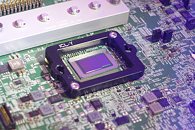
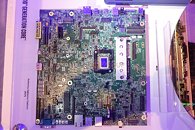
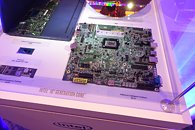
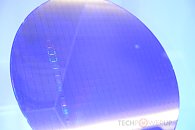
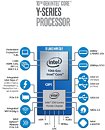
43 Comments on Intel "Ice Lake-Y" MCM Pictured Up Close
Besides, XboxOne provides and acceptable gaming experience for many people. Does it need to get even better? Sure, but we are headed that direction. Imagine an A12X with a higher TDP and active cooling. Or imagine a Ryzen APU with more memory channels/bandwidth. I think we aren’t that far off.
Intel is in trouble, they know it and now sound like the vaporware of AMD bulldozer past.
There will be a division in computing where cell phones are as fast and take over more, laptops and desktops will still win performance, and Ultrabooks will slow as people need more connectivity and power than they offer.
Slides are covered in a bunch of places but Anandtech seems as good a source as any: www.anandtech.com/show/14436/intel-10th-gen-10nm-ice-lake-cpus
This is compared to Skylake, so security mitigations have minimal impact in this comparison. If any, security mitigations have heavier impact on Skylake and will widen the gap.
Iso-frequency. I wouldn't put it beyond Intel to test different core counts but from results it would be pretty impossible for that to be the case.
So when Intel claims an 18% "IPC" gain for Ice Lake (-U/-Y), I will take it with a grain of salt. But still, Sunny Cove is a major architectural overhaul, and even if the real gain is more like ~12-15%, it's still very good and would be comparable to Sandy Bridge -> Skylake.
But remember, this is just the low-power variant. I'm more interested to see the improvements for Ice Lake-SP, which have a different cache configuration, memory controller and various core features.
Anyway, I'm very much looking forward to all the reviews on these new CPUs. So many questions.
For ICLFor WHLOn the gaming its vs a actual product (HP spectre x360 13t 13-ap0038nr). Should have use the same restrictions for both.
Its also interesting that on the game test Intel decided to use the same windows build for comparison but not for the performance test.Inconsistent to say the least. ICL pre-production test bench vs a final product in one test then a pre-production in another and they throw in the mixing of OS builds. All while not even mentioning ICL clocks.